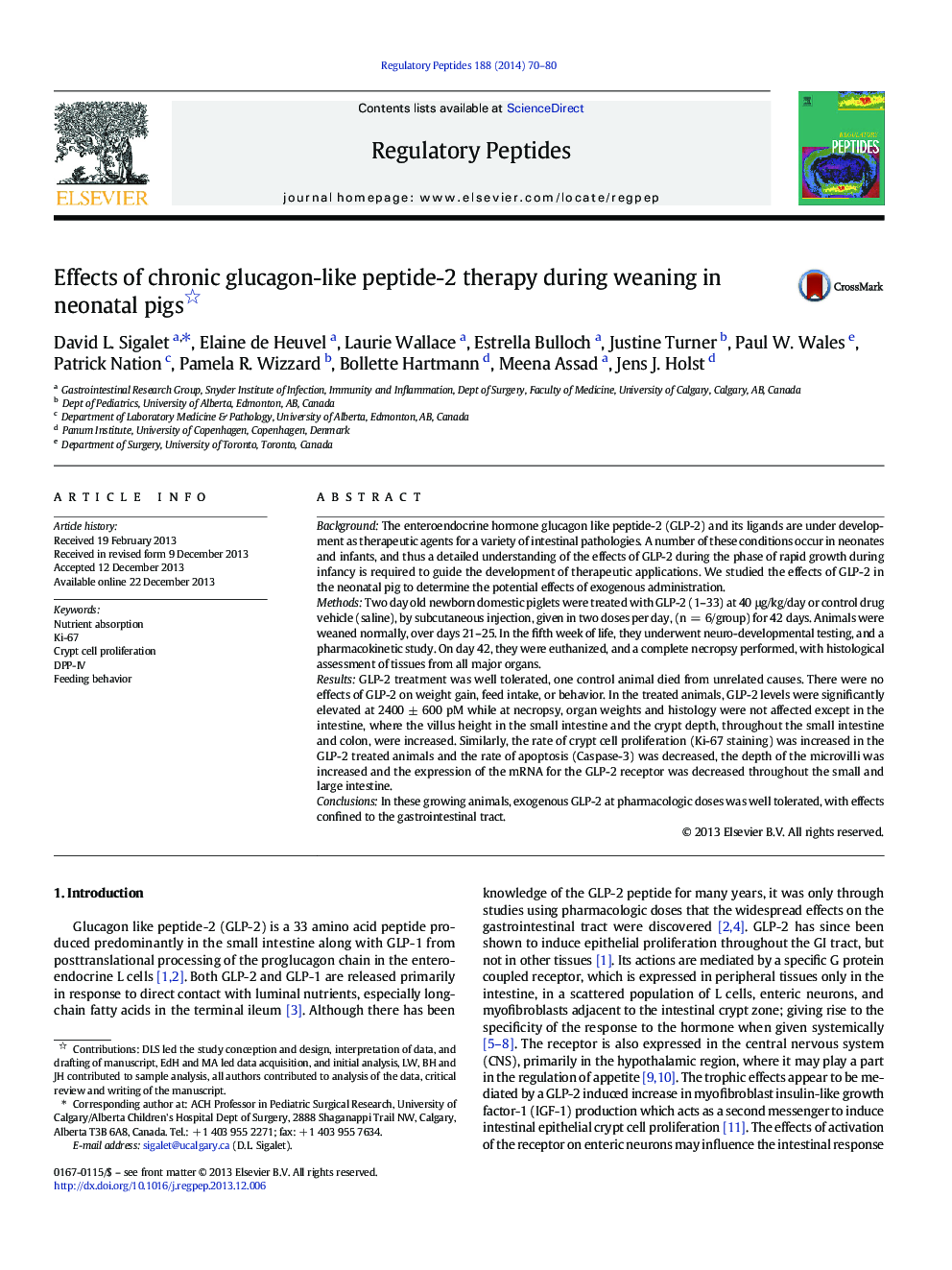| کد مقاله | کد نشریه | سال انتشار | مقاله انگلیسی | نسخه تمام متن |
|---|---|---|---|---|
| 2022420 | 1542397 | 2014 | 11 صفحه PDF | دانلود رایگان |
• High doses of GLP-2 throughout the weaning period are well tolerated
• GLP-2 effects in growing animals are confined to the intestinal mucosa
• High doses of GLP-2 down-regulate the expression of the GLP-2 receptor
• Exogenous GLP-2 does not affect stimulus response, or feed intake in infant pigs
• GLP-2 pK after s.c. injection are similar in infant pigs and adult humans
BackgroundThe enteroendocrine hormone glucagon like peptide-2 (GLP-2) and its ligands are under development as therapeutic agents for a variety of intestinal pathologies. A number of these conditions occur in neonates and infants, and thus a detailed understanding of the effects of GLP-2 during the phase of rapid growth during infancy is required to guide the development of therapeutic applications. We studied the effects of GLP-2 in the neonatal pig to determine the potential effects of exogenous administration.MethodsTwo day old newborn domestic piglets were treated with GLP-2 (1–33) at 40 μg/kg/day or control drug vehicle (saline), by subcutaneous injection, given in two doses per day, (n = 6/group) for 42 days. Animals were weaned normally, over days 21–25. In the fifth week of life, they underwent neuro-developmental testing, and a pharmacokinetic study. On day 42, they were euthanized, and a complete necropsy performed, with histological assessment of tissues from all major organs.ResultsGLP-2 treatment was well tolerated, one control animal died from unrelated causes. There were no effects of GLP-2 on weight gain, feed intake, or behavior. In the treated animals, GLP-2 levels were significantly elevated at 2400 ± 600 pM while at necropsy, organ weights and histology were not affected except in the intestine, where the villus height in the small intestine and the crypt depth, throughout the small intestine and colon, were increased. Similarly, the rate of crypt cell proliferation (Ki-67 staining) was increased in the GLP-2 treated animals and the rate of apoptosis (Caspase-3) was decreased, the depth of the microvilli was increased and the expression of the mRNA for the GLP-2 receptor was decreased throughout the small and large intestine.ConclusionsIn these growing animals, exogenous GLP-2 at pharmacologic doses was well tolerated, with effects confined to the gastrointestinal tract.
Journal: Regulatory Peptides - Volume 188, 10 January 2014, Pages 70–80
